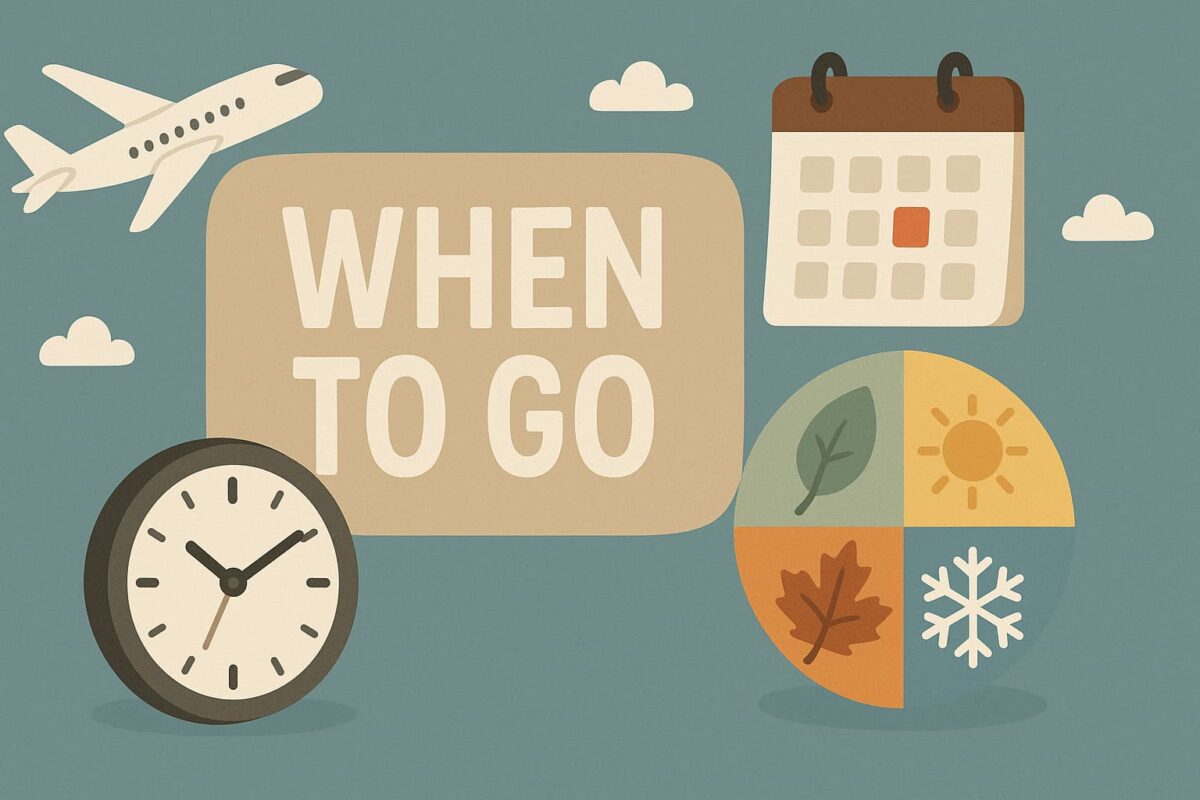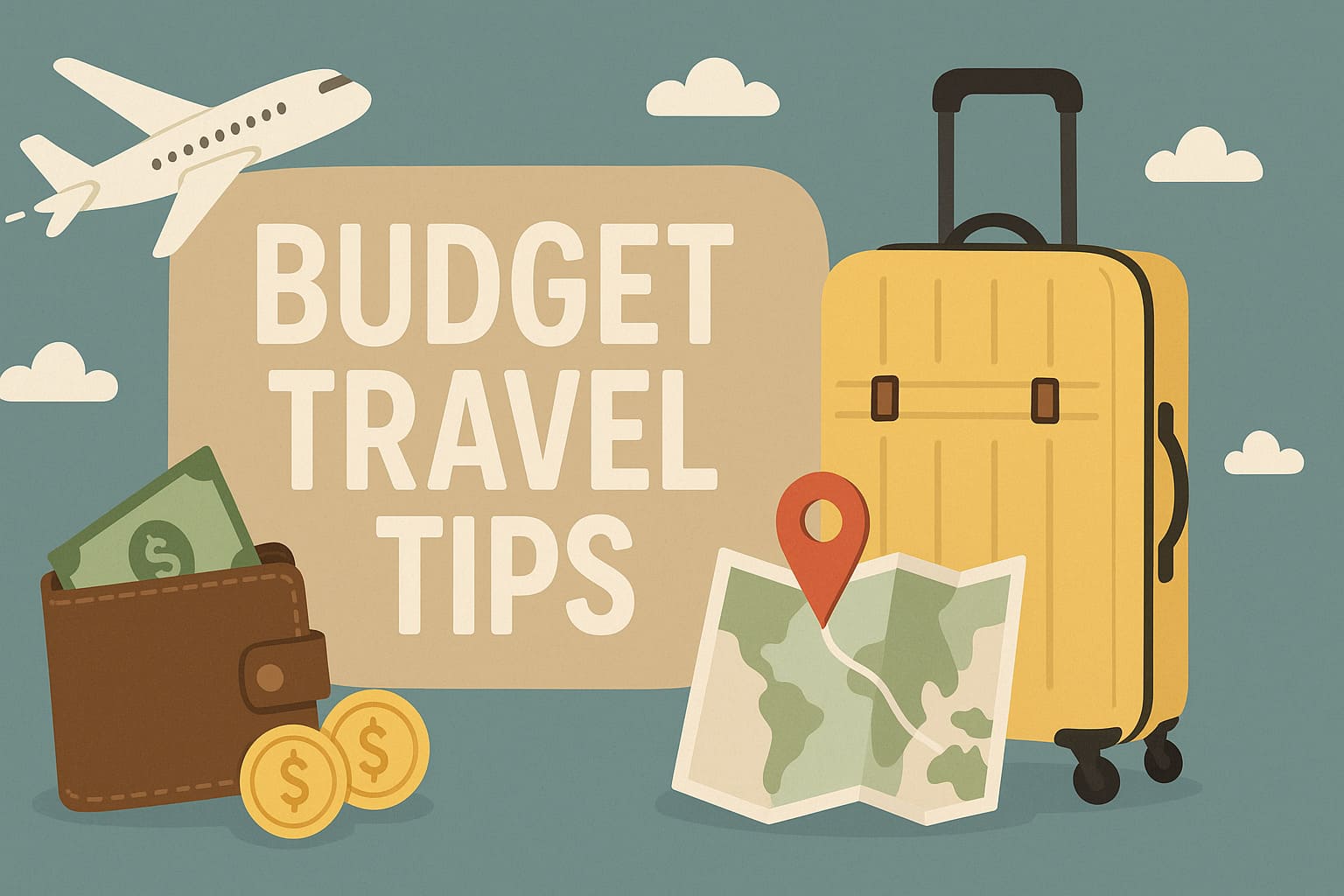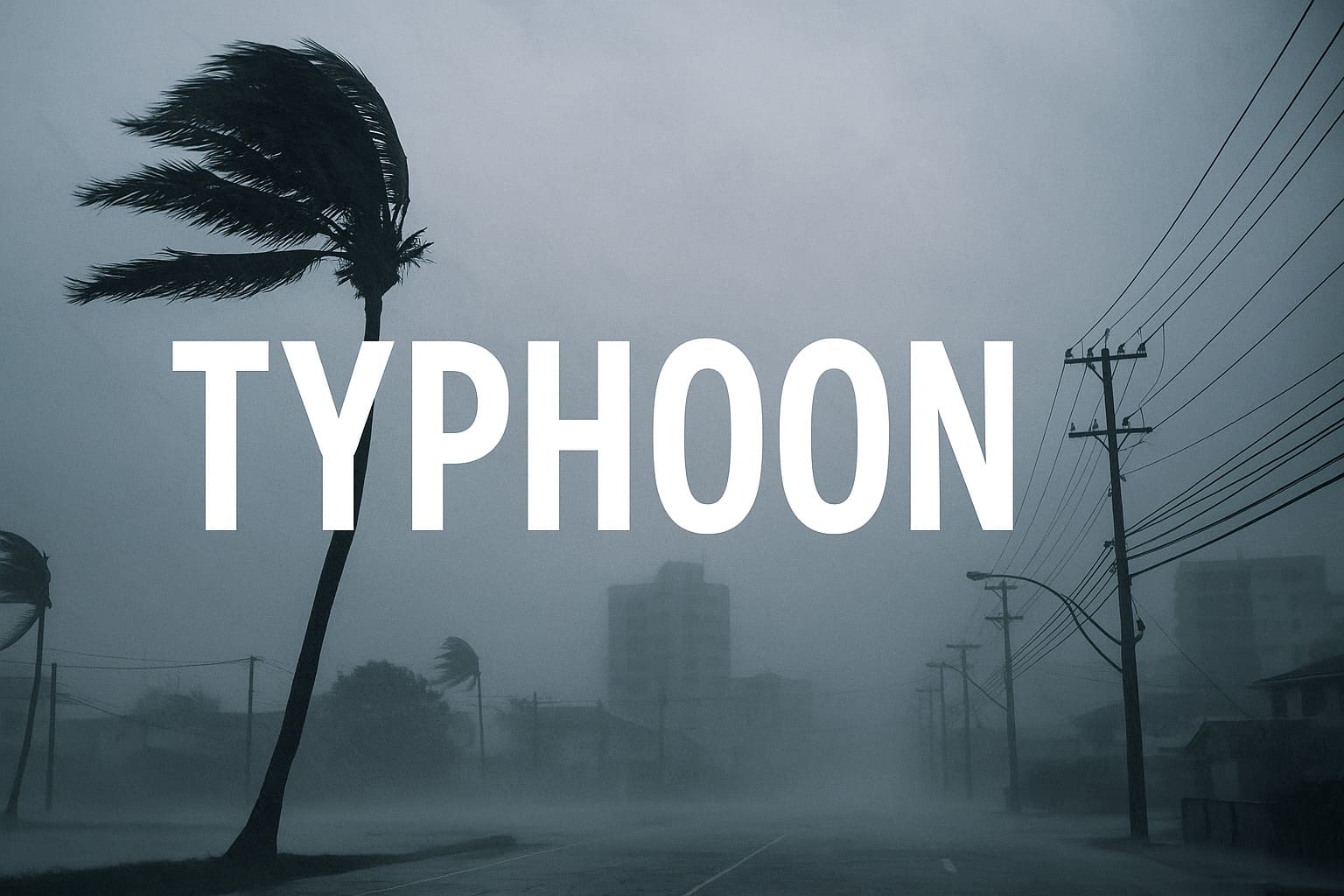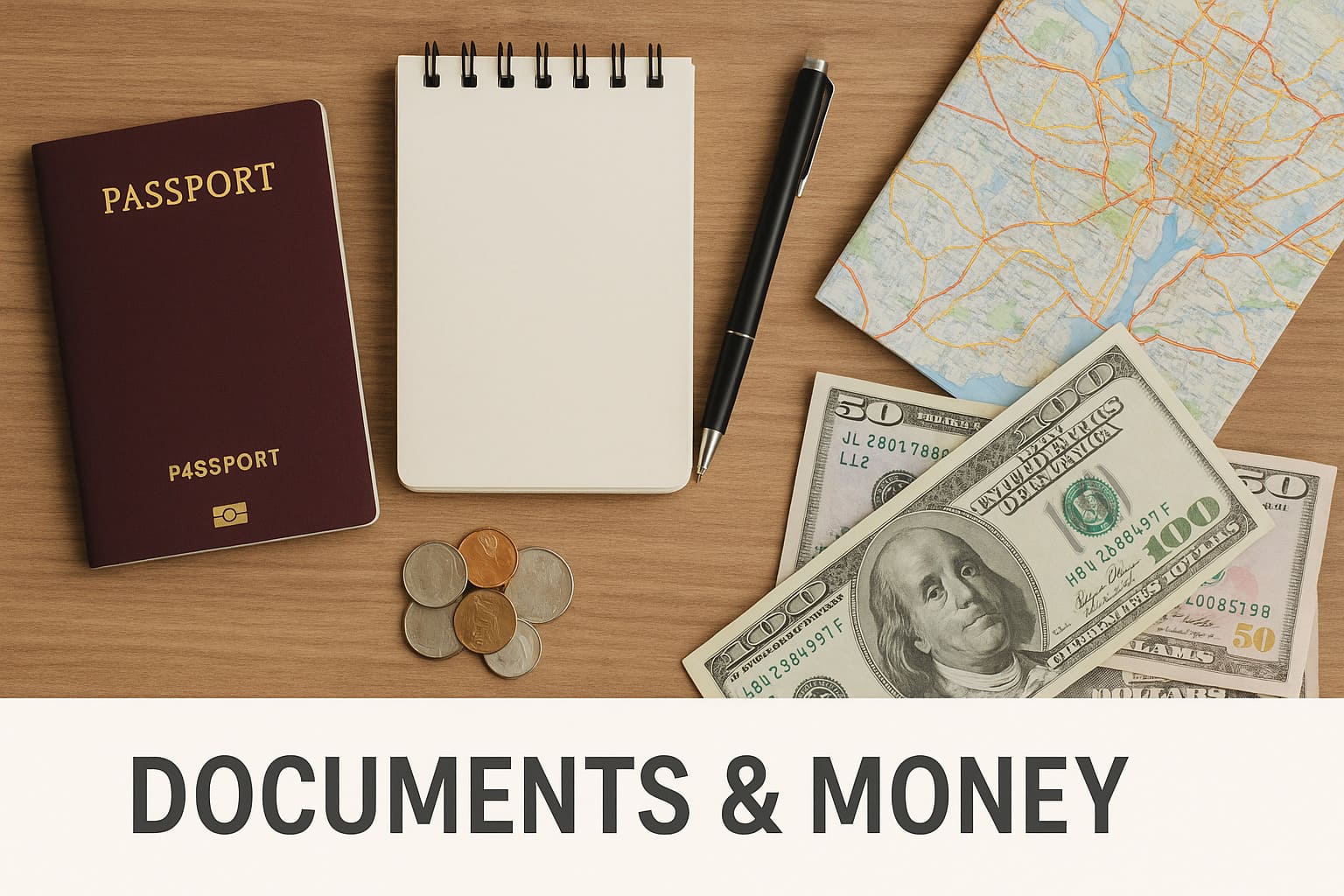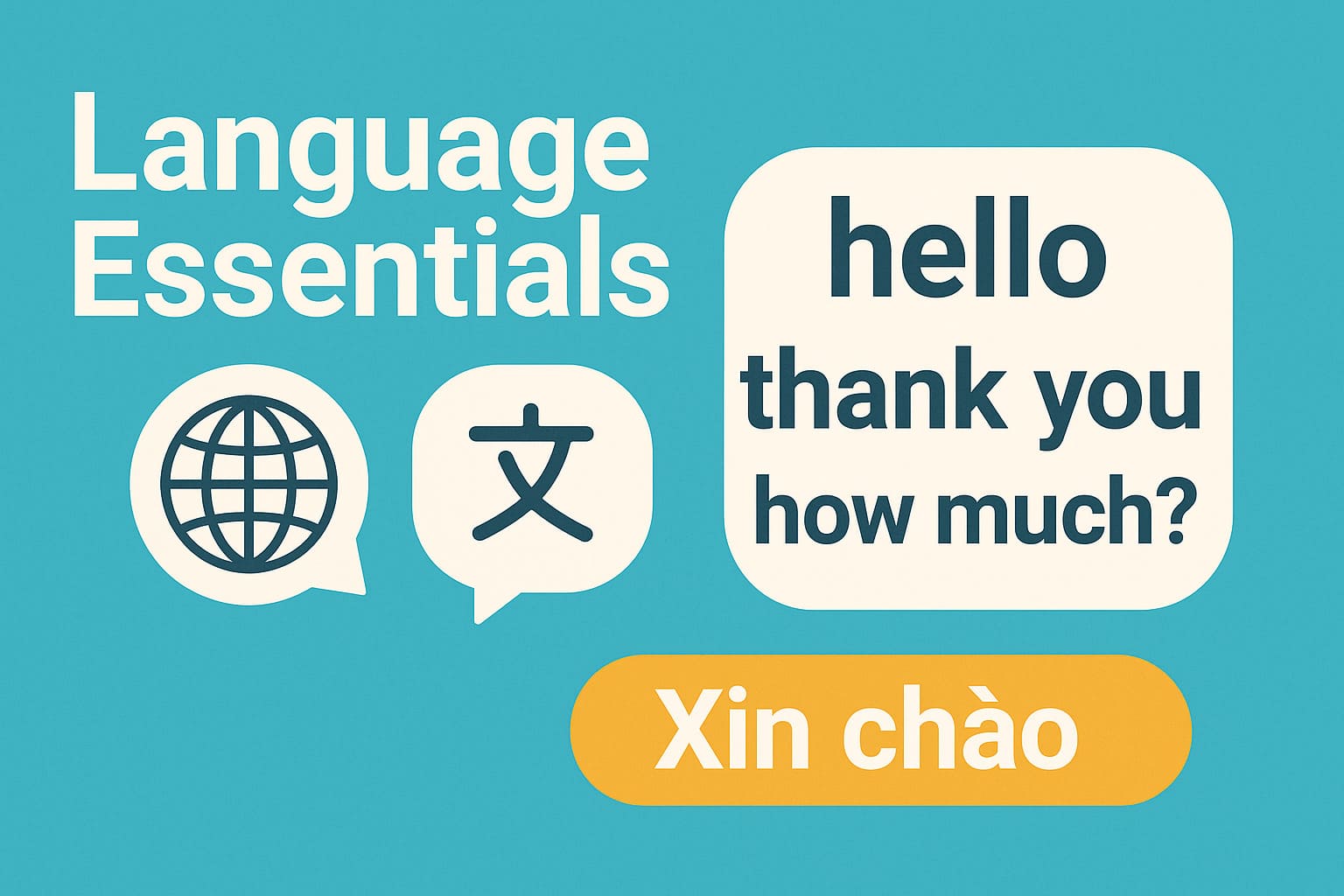Vietnam stretches over 1,000 miles from north to south in an S-shaped curve, offering an impressive variety of climates and cultures across its regions. The clear distinctions between the North, Central, and South make Vietnam a year-round travel destination.
Climate by Region
- Northern Vietnam: Four distinct seasons. Summer (May–October) is hot and humid with frequent rain. Winter (November–March) is dry and cold, with mist or light drizzle.
- Central Vietnam: Dry season from January to August; rainy season from September to December. This region is prone to typhoons, especially in late autumn.
- Southern Vietnam: Two clear seasons—dry (November–April) and rainy (May–October). Temperatures remain stable throughout the year, ranging from 77°F to 95°F (25°C to 35°C).
Why Timing Matters for Travel in Vietnam
Choosing the right time to visit Vietnam doesn’t just improve your comfort—it can shape your entire experience:
- Festivals & Cultural Events: Key celebrations like Lunar New Year (Tết), the Hùng Kings’ Festival, and Chùa Hương Festival take place at specific times of year.
- Travel Costs: Flights, hotels, and services tend to be more expensive during the international high season (December–March) and more affordable in the off-season (May–October).
- Weather Preparedness: The rainy season (May–October in the South) and typhoon season (September–November in Central Vietnam) can occasionally disrupt travel plans. That said, it doesn’t rain every day—monitor forecasts and build a flexible itinerary for the best experience.
Seasonal Weather in Vietnam
Spring (February – April)
- Weather: Mild and pleasant, with average temperatures ranging from 59°F to 77°F (15°C to 25°C).
- Highlights: Flowers bloom across the country, and numerous traditional festivals take place. This is one of the best times to explore both Northern and Southern Vietnam.
- Note: Avoid traveling during Lunar New Year (usually late January or early February), as many services may be closed and prices can rise significantly.
Summer (May – August)
- Weather: Hot and humid, especially in the North and Central regions. Afternoon showers are common in the South.
- Highlights: Ideal time for beach vacations in Phu Quoc, Nha Trang, and Da Nang.
- Note: Sudden rainstorms are possible—bring a lightweight rain jacket and check the weather forecast frequently.
Autumn (September – November)
- Weather: Arguably the most pleasant season, with cooler temperatures and less rainfall.
- Highlights: Golden rice fields in Sapa, Ha Giang, and Mu Cang Chai. This is also a festive season with cultural events like the Mid-Autumn Festival.
- Note: Central Vietnam may experience typhoons or heavy rains during this period—monitor weather updates before traveling.
Winter (December – January)
- Weather: Cold in the North, especially in mountainous areas like Sapa and Ha Giang. The South remains warm and comfortable.
- Highlights: A great season for cultural and historical sightseeing, as well as enjoying the festive atmosphere around the holidays.
- Note: This is peak travel season for international visitors—accommodations and flights may be more expensive, so booking in advance is recommended.
Traveling Vietnam by Region
Northern Vietnam (Hanoi, Sapa, Ha Long Bay)
- Best time to visit: March–April and October–November
These months offer cool, comfortable weather with minimal rainfall—ideal for sightseeing and photography.
Autumn (October–November) is especially scenic in the mountains, with golden rice terraces and romantic misty landscapes in places like Sapa and Mu Cang Chai. - When to avoid: June–August
High temperatures, humidity, and frequent rain can disrupt outdoor activities. - Travel tip: From December to February, mountainous areas can get quite cold. Temperatures may drop below 50°F (~10°C), so bring warm clothing.
Central Vietnam (Hue, Da Nang, Hoi An)
- Best time to visit: February–August
Sunny weather and low rainfall make this a great time for beach getaways and exploring historic sites. - When to avoid: September–November
This is the rainy season with a higher risk of typhoons, particularly in coastal areas. - Travel tip: Storms and flooding are possible in the fall—keep an eye on weather forecasts and have a backup plan.
Southern Vietnam (Ho Chi Minh City, Mekong Delta, Phu Quoc)
- Best time to visit: December–April
This is the dry season, offering warm, pleasant weather perfect for city tours and exploring rural areas. - When to avoid: May–November
It’s the rainy season, but showers are typically short and occur in the afternoon, so they don’t usually interfere much with travel plans. - Travel tip: Even during the rainy season, you can enjoy your trip by scheduling outdoor activities in the morning and having indoor options for later in the day.
Travel by Interest
Trekking & Nature Exploration
- Best time to go: March–May and September–November
These months offer cool, dry weather—ideal for hiking and outdoor adventures. - Recommended destinations: Sapa, Ha Giang, Pu Luong, Phong Nha–Ke Bang National Park, and Moc Chau
Beach Relaxation
- Best time to go: April–August
Warm and sunny conditions make this the perfect season for enjoying Vietnam’s beaches. - Note: Avoid Central Vietnam from October to November due to the risk of storms and heavy rain.
- Recommended destinations: Phu Quoc, Nha Trang, Da Nang, Mui Ne
Cultural & City Travel
- Best time to go: February–April or October–December
Pleasant weather makes this a great time to explore historical landmarks and soak in local culture. - Recommended destinations: Hanoi, Hue, Hoi An, Ho Chi Minh City
Photography (Rice Harvest & Festivals)
- Best time to go:
- September: Mu Cang Chai and Ha Giang, when golden rice terraces are at their peak.
- December: Da Lat, with blooming wild sunflowers, crisp air, and magical morning fog.
Travel Tips
- Check the weather forecast before your trip.
- Avoid domestic peak holidays like April 30 (Reunification Day), September 2 (National Day), and Lunar New Year (Tết).
- Book flights and accommodations early—especially during the international high season (December through April).
- Bring a compact rain jacket and versatile walking shoes or sandals for unexpected weather or varied terrain.
Conclusion: Vietnam – A Year-Round Destination for Every Travel Style
With its diverse climate and rich landscapes, Vietnam is a destination that can be explored throughout the year. Whether you’re seeking nature, culture, relaxation, or adventure, choosing the right season based on your travel goals will help you make the most of everything this beautiful country has to offer.

Your feedback is highly valuable to us.
Please share what you liked or suggest improvements so we can make our content even more helpful

